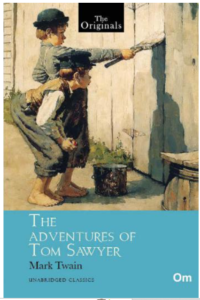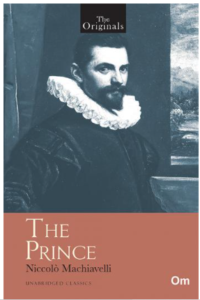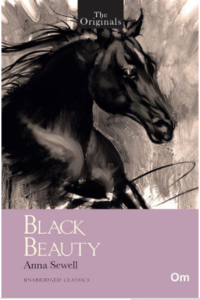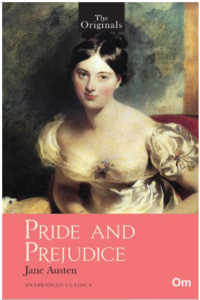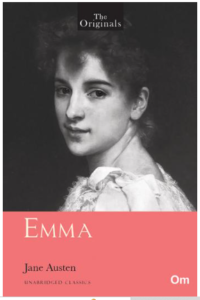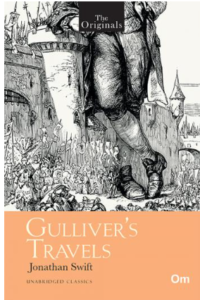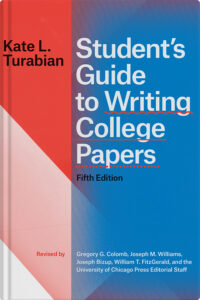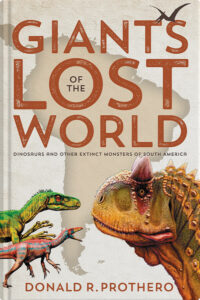16 results
- Brand: Om Books InternationalThe Adventures of Tom Sawyer( Unabridged Classics) : The Originals
₹150.00₹113.00About The Book
“Tom Sawyer, a mischievous young boy, lives in the fictional town of St. Petersburg, Missouri with his Aunt Polly and half-brother Sid. Together with his friend Huckleberry Finn, the son of a drunk, ruthless father, he accidentally witnesses a murder. What unfolds in The Adventures of Tom Sawyer (1876) is a series of exhilarating events: both friends identify Injun Joe, the real murderer, in court; testify to the innocence of the person wrongly accused and find buried treasure in a haunted house. After autobiographical works like The Innocents Abroad (1869), and Roughing It (1872), this book was Mark Twain’s debut novel that reflected the author’s own experiences of youth and adulthood. He even chose to name his protagonist after a fireman whom he had met in San Francisco in 1863. Twain presents a sharp social commentary on 19th-century American life through Tom’s tale of childhood resentment against societal hypocrisies.”
About Mark Twain
Samuel Langhorne Clemens, better known by his pen name, Mark Twain, was America’s most famous literary icon. Born on 30 November 1835, in the town of Florida, Missouri, he was the sixth child of John and Jane Clemens. Four years after his birth, in 1839, the Clemens family moved to the town of Hannibal, a developing port city on the banks of the Mississippi.
At the age of nine, Twain witnessed the murder of a cattle rancher and when he turned 10, he saw a slave being struck by a piece of iron by a white overseer. Violence was commonplace and such incidents shaped the writer in him.
Twain became the chronicler of hypocrisies and vanities through the colloquial, raw, and vivid voice of the common folk. Satire and irreverence were the weapons that he used to deflate the arrogance of the pretentious. In 1865, one of his remarkable short stories about life in a mining camp, Jim Smiley and His Jumping Frog, was published in newspapers and magazines, earning him national acclaim. A few years later, in 1869, The Innocents Abroad was published, and became a bestseller.
This one-of a kind travel book was born out of his five-month sea cruise in the Mediterranean.
The Adventures of Tom Sawyer (1876) and its sequel, The Adventures of Huckleberry Finn (1884) are among Twain’s seminal works. In 1935, Ernest Hemingway remarked, All modern American literature comes from one book by Mark Twain called Huckleberry Finn. Mark Twain died on 21 April 1910. - Brand: Om Books InternationalThe Time Machine ( Unabridged Classics) : The Originals
₹150.00₹113.00About The Book
It sounds plausible enough tonight, but wait until tomorrow. Wait for the common sense of the morning. Born out of H.G. Wells’ literary vision of the future, The Time Machine (1895) is an extraordinary work of early science fiction. A Victorian scientist builds a time machine and lands in the year 802,701 AD. Initially, he is transported to the pastoral idyll of an unknown land which is delightfully peaceful. Soon, however, the paradisiacal façade shatters and he discovers the reality of two distinct species: Eloi are useless, childlike adults surviving on a fruit based diet, and Morlocks who are barbarians thriving underground. The Time Traveller saves one of the Eloi from drowning, and navigates through tunnels to retrieve his time machine that has gone missing. Before returning to his era, The Time Traveller also visits a land where a bloated red sun stares motionless in the sky and the only sign of life is a black blob with tentacles. Once again, the scientist prepares to leave on another time travel, but this time will he return?
About H.G. Wells
HERBERT GEORGE WELLS was born on 21 September 1866, in Bromley, England. In 1874, Wells, the son of domestic helpers-turned-shopkeepers, had an accident that left him bedridden for months. It was during this time that an avid reader was born. His father would bring him books from the local library and Wells would spend hours devouring the written word. Later, when his mother returned to working as a maidservant in a country house in Sussex, Wells found himself in the owner’s magnificent library, immersed in the works of stalwarts like Jonathan Swift, Charles Dickens, Sir Thomas More, Plato, Daniel Defoe and others. As a teenager, Wells worked as a draper’s assistant but eventually quit. Later, he won a scholarship to the Normal School of Science (later, the Royal College) where he learned about astronomy, biology, chemistry, and physics, among other subjects. All through, Wells nursed the secret desire to become a writer someday. In 1895, following the publication of The Time Machine, Wells became an overnight sensation. The story of an English scientist developing a time travel machine earned him the title of Father of Futurism. Wells’ successive books, often termed as ‘scientific romances’ included The Island of Doctor Moreau (1896), The Invisible Man (1897) and The War of the Worlds (1898) Wells’ works reflected the need for a society that flourished on the ideas and principles of global socialism. Published in 1920, The Outline of History is regarded as Wells’ best-selling work. A champion of social and political ideas, he also ran for Parliament as a Labour Party candidate between 1922 and 192 The visionary author, sociologist, journalist, and historian breathed his last on 13 August 1946, aged 79. - Brand: Om Books InternationalThe Prince : The Originals
₹150.00₹113.00About The Book
“Everyone sees what you appear to be, few experience what you really are. Niccol� Machiavelli wrote The Prince�a book on the ruthless acquisition of power and governance of the State�with the intention of appeasing Lorenzo de� Medici, the ruler of Florence, in the hope of resuscitating his political career. Often referred to as Machiavelli�s �job application� in disguise, The Prince foregrounded the contrasting aspects of virtue and vice: virtue is not always an admirable trait and vice is not always detrimental to society. He presented an �unsentimental� analysis of human behaviour and justified acts of immorality, deceit and deviousness to control a State. Written in 1513, shortly after Machiavelli was exiled from Florence, The Prince was posthumously published in 1532. Prohibited by the Court of Rome, The Prince was also banned by the Catholic Church. By early 1600s, William Shakespeare used �Machiavel� as a term to describe an unscrupulous, devious and scheming person in his works. Even today, �Machiavellian� means everything evil.”
About Niccolo Machiavelli
Born on 3 May 1469 in Florence, Niccol di Bernardo dei Machiavelli was a historian, diplomat, politician, philosopher, humanist, and writer. Regarded as the founder of modern political science, Machiavelli lived in the turbulent times of power struggles among European states and the Holy Roman Empire.
The young Machiavelli became a diplomat after the temporary fall of Florence’s ruling Medici family in 1494. From 1498 to 1512, he served as secretary to the Second Chancery of the Republic of Florence. Between 1503 and 1506, Machiavelli was responsible for the Florentine militia. In 1509, under his tutelage, Florentine citizen soldiers defeated Pisa. After his plans to organise a Florentine militia against the return of the Medici family to power in 1512 were unearthed, Machiavelli was banished from politics and thrown into prison. It was during this time that he earned the reputation for being shrewd and ruthless. In fact, the term Machiavellian is often associated with deviousness and political deceit.
After the death of Pope Julius II in 1513, the son of Lorenzo de Medici became Pope Leo X. Machiavelli hoped that by dedicating his most renowned work The Prince to Lorenzo de Medici, he would obtain an office that would help him return to public life. Alas, that was not to be.
Machiavelli’s other seminal works include On the Art of War (1521), The Mandrake (1524) and Discourses on Livy which was published posthumously in 1531. He also wrote carnival songs, comedies and poetry.
Following a period of illness, Machiavelli died on 21 June 1527, aged 58. - Brand: Om Books InternationalTo The Lighthouse : The Originals
₹150.00₹113.00About The Book
“And all the lives we ever lived and all the lives to be are full of trees and changing leaves. Virginia Woolf’s most autobiographical novel, To the Lighthouse (1927) revolves around the Ramsay family and their life in the summer home situated at a distance from a lighthouse, in the Hebrides, Isle of Skye in Scotland between 1910 and 1920. Enjoying the summer with their eight children, the Ramsays host an assortment of guests—Charles Tansley, an admirer of Mr. Ramsay’s work as a philosopher; Lily Briscoe, a young artist, and William Bankes, an old friend of the Ramsays, among others. Six-year-old James Ramsay wants his father to take him to the lighthouse, but Mr Ramsay keeps delaying the trip. And when the summer ends, war and death alter many realities. The journey to the lighthouse is deferred. A book of childhood desires, conflicting adult relationships, philosophical introspection, and multiple subjectivities, To the Lighthouse, divided into three sections—The Window, Time Passes, The Lighthouse—is about many journeys and an evergreen classic.”
About Virginia Woolf
Born on 25 January 1882, Virginia Woolf was one of the most influential modernist 20th-century English writers, notable for using stream of consciousness as a literary technique in her works. While writing anonymous reviews for journals, she resolved to ‘re-form’ the novel by experimenting with dreams and delirium. Her novel Melymbrosia, which she completed in 1912 was born out of this determination. Recast and published in 1915 as The Voyage Out, it was about a young woman’s journey of selfdiscovery on her father’s ship in South America. Later, she modelled many of her characters on real-life associates and acquaintances.
At the onset of 1924, the Woolfs moved their residence from the suburbs back to Bloomsbury, where a relationship blossomed between the aristocratic Vita Sackville-West and Virginia. With Sackville-West, she learned to face her anxieties and overcome her nervous ailments. In fact, Orlando, a fantastical biography is partly a portrait of Vita Sackville-West.
One of the most important chapters in her early life was the summer home the family visited in St Ives, Cornwall, where she first beheld the Godrevy Lighthouse. To the Lighthouse (1927) is, therefore, considered one of her most autobiographical novels. Apart from her extremely popular extended essay, ‘A Room of One’s Own’ (1929), her other seminal works include-Mrs Dalloway (1925), Orlando (1928) and The Waves (1931).
In 1941, Virginia Woolf drowned herself in a river, aged 59. Her last work, Between the Acts, was posthumously published later that year. - Brand: Om Books InternationalFrankenstein( Unabridged Classics) : The Originals
₹150.00₹113.00About The Book
First published in 1818, Frankenstein or, The Modern Prometheus by Mary Shelley is the foremost gothic novel of the Romantic tradition and inspired several other works in the horror genre. Shelley was inspired to write the story—often considered the first science fiction story ever written—after a visit to the Frankenstein Castle, where, it was believed that two centuries back, an alchemist had conducted experiments. The story traces the life of Victor Frankenstein, a student of sciences at the University Of Ingolstadt, who creates a grotesque humanoid, commonly referred to as “the monster” in the novel. What follows is a tale of tragedy, isolation, betrayal and absolute horror. Frankensteinor, The Modern Prometheus has been adapted to film, stage and television and remains an evergreen classic.
About Mary Shelley
Mary Shelley (1797-1851) was a renowned English novelist, editor, biographer and short story writer. The daughter of political philosopher William Godwin and feminist writer Mary Wollstonecraft, Shelley was highly educated and infused radical political elements in her works. She is best-known for the widely acclaimed gothic novel Frankenstein, or The Modern Prometheus (1818), which is considered the first true science fiction story. Other major works by Shelley include Valperga (1823), The Last Man (1826) and Lodore (1835). Besides being an accomplished writer, Shelley also edited and promoted the works of her husband, Percy Bysshe Shelley, the renowned Romantic poet. She died in 1851, aged 53. - Brand: Om Books InternationalWhy I Am An Atheist & Other Writings
₹150.00₹120.00Book was Published by New Om Books.
- Brand: Om Books InternationalThe Adventures of Huckleberry Finn ( Unabridged Classics) : The Originals
₹165.00₹124.00About The Book
In The Adventures of Huckleberry Finn, a sequel to The Adventures of Tom Sawyer, Huck escapes from the clutches of his abusive drunk father ‘Pap’, and the ‘sivilizing’ guardian Widow Douglas. After faking his own death in pursuit of freedom, during one of his travels, Huck, encounters Jim, a runaway slave. Together, they embark on an exciting journey along the Mississippi River, meeting different people and participating in their unusual lives. With time, Huck finds himself in a moral dilemma over societal values and his own friendship with Jim. First published in 1884, the book was an indictment of racism, class prejudices and identity conflicts. Regarded as one of the Great American Novels, this timeless classic by Mark Twain is also among the first in American literature to be written in regional English, relying on scathing satire, folksy humour, colloquial speech and coarse language.
About Mark Twain
Samuel Langhorne Clemens, better known by his pen name, Mark Twain, was America’s most famous literary icon. Born on 30 November 1835, in the town of Florida, Missouri, he was the sixth child of John and Jane Clemens. Four years after his birth, in 1839, the Clemens family moved to the town of Hannibal, a developing port city on the banks of the Mississippi.
At the age of nine, Twain witnessed the murder of a cattle rancher and when he turned 10, he saw a slave being struck by a piece of iron by a white overseer. Violence was commonplace and such incidents shaped the writer in him.
Twain became the chronicler of hypocrisies and vanities through the colloquial, raw, and vivid voice of the common folk. Satire and irreverence were the weapons that he used to deflate the arrogance of the pretentious. In 1865, one of his remarkable short stories about life in a mining camp, Jim Smiley and His Jumping Frog, was published in newspapers and magazines, earning him national acclaim. A few years later, in 1869, The Innocents Abroad was published, and became a bestseller.
This one-of a kind travel book was born out of his five-month sea cruise in the Mediterranean.
The Adventures of Tom Sawyer (1876) and its sequel, The Adventures of Huckleberry Finn (1884) are among Twain’s seminal works. In 1935, Ernest Hemingway remarked, All modern American literature comes from one book by Mark Twain called Huckleberry Finn. Mark Twain died on 21 April 1910. - Brand: Om Books InternationalThe Originals : Mrs Dalloway (Unabridged Classics)
₹175.00₹132.00About The Book
It might be possible that the world itself is without meaning. Published in 1925, Mrs Dalloway by Virginia Woolf is an incisive portrayal of a single day in the life of 51-year-old Clarissa Dalloway, the perfect high- society hostess, in post-World War I, England. As she prepares to host a party in the evening, she is flooded with memories of her youth in the countryside in Bourton, her choice of Richard Dalloway as husband over the intriguing and demanding Peter Walsh, amidst myriads of other things. A visit from Peter that morning reinforces Mrs Dalloway’s pressing need to re-examine the trajectory that her internal and external lives have taken between the pull and push of the past and present, within a certain social structure. In October 2005, Mrs Dalloway, arguably Woolf’s finest novel, was included on Time’s list of the 100 best English-language novels written since Time debuted in 1923.
About Virginia Woolf
Born on 25 January 1882, Virginia Woolf was one of the most influential modernist 20th-century English writers, notable for using stream of consciousness as a literary technique in her works. While writing anonymous reviews for journals, she resolved to ‘re-form’ the novel by experimenting with dreams and delirium. Her novel Melymbrosia, which she completed in 1912 was born out of this determination. Recast and published in 1915 as The Voyage Out, it was about a young woman’s journey of selfdiscovery on her father’s ship in South America. Later, she modelled many of her characters on real-life associates and acquaintances.
At the onset of 1924, the Woolfs moved their residence from the suburbs back to Bloomsbury, where a relationship blossomed between the aristocratic Vita Sackville-West and Virginia. With Sackville-West, she learned to face her anxieties and overcome her nervous ailments. In fact, Orlando, a fantastical biography is partly a portrait of Vita Sackville-West.
One of the most important chapters in her early life was the summer home the family visited in St Ives, Cornwall, where she first beheld the Godrevy Lighthouse. To the Lighthouse (1927) is, therefore, considered one of her most autobiographical novels. Apart from her extremely popular extended essay, ‘A Room of One’s Own’ (1929), her other seminal works include-Mrs Dalloway (1925), Orlando (1928) and The Waves (1931).
In 1941, Virginia Woolf drowned herself in a river, aged 59. Her last work, Between the Acts, was posthumously published later that year.
Other Books By Virginia Woolf - Brand: Om Books InternationalBlack Beauty : The Originals
₹175.00₹132.00About The Book
“If a thing is right, it can be done, and if it is wrong, it can be done without; and a good man will find a way. Black Beauty, a young colt, is raised with love and care by his benevolent master, Farmer Grey. Once he grows up to be a handsome stallion, due to a cruel twist of fate, his master is forced to sell him. Leaving his carefree days on an English farm behind, Black Beauty soon finds himself in the hands of several ruthless owners and carriage drivers in London. Battling the bitterness of his masters, he yearns to return to the freedom and comforts of his country life. Black Beauty, the autobiography of a horse, was written during the last seven years of Anna Sewell’s life. A testimony to her outrage against the ill-treatment of horses in Victorian England and her empathy for animals, it remains an evergreen classic!”
About Anna Sewell
Born on 30 March 1820 in Norfolk, England, Anna Sewell wrote only one books Black Beauty: The Autobiography of a Horse that was published in November 1877. Little did she know that it would become one of the bestselling and most loved classics of all time. From an early age, Anna Sewell assisted her mother, Mary Wright Sewell, a well-known author of children’s books, in editing her manuscripts. For lack of means and fortune, she was home-schooled.
At 14, she slipped and gravely injured her ankles. Following this mishap, she spent most of her life confined to her home, and her mobility depended only on horsedrawn carriages. A fictional autobiography of a high-bred horse, Black Beauty was not just a novel for children. Anna Sewell’s intent behind writing the book was, to induce kindness, sympathy, and an understanding treatment of horses. The use of anthropomorphism as a literary device in Black Beauty stems from her love of horses and her deep resentment against the ill-treatment of animals. Anna Sewell never married. She died in 1878, five months after Black Beauty was published. - Brand: Om Books InternationalGreat Expectations ( Unabridged Classics) : The Originals
₹175.00₹132.00About The Book
Great Expectations revolves around the life of an orphan nicknamed Pip. The novel, set in the 19th century, traces the psychological growth of Pip in three stages: his childhood in the marshes of Kent, his journey from the rural environs to the London metropolis, and finally his reluctant reconciliation with the vanity of false promises and values. The cast includes the cold yet ethereal Estella, the kind-hearted blacksmith Joe, the ‘pale young gentleman’ Herbert Pocket and the affluent, eccentric spinster Miss Havisham, among others. George Bernard Shaw said of the novel, ‘All of one piece and consistently truthful.’
About Charles Dickens
Born on 7 February 1812, in Portsmouth, Charles Dickens was one of the greatest novelists of the Victorian era. He created some of the most intriguing fictional characters in literature. The author’s success began with the 1836 publication of the Pickwick Papers, following which he became an international celebrity. Known for his humour, satire and incisive representation of society through his characters, his literary triumphs include A Tale of Two Cities, David Copperfield, Oliver Twist, and Great Expectations. A literary colossus of his time, he wrote 15 novels, 5 novellas, hundreds of short stories and non-fiction articles. He even performed for Queen Victoria in 1851. Such was the charisma of the author that the term Dickensian, is still used to describe situations
reminiscent of his narratives. Literary stalwarts like Leo Tolstoy, George Orwell and G.K. Chesterton admired him for his comedy, prose style and realism. The quintessential Victorian author died in 1870, and was buried in Westminster Abbey.Other Books By Charles Dickens
- Brand: Om Books InternationalPride and Prejudice ( Unabridged Classics) : The Originals
₹175.00₹132.00About The Book
Charles Bingley, a wealthy young gentleman has arrived at Netherfield. The news causes a stir in the neighbourhood village of Longbourn, especially the Bennet household. With five unmarried daughters—Jane, Elizabeth, Mary, Kitty, and Lydia—Mrs. Bennet is desperate to attend a ball where Mr. Bingley is expected to be present. Mr. Bingley spends most of the evening dancing with Jane, and develops a fondness for her. His close friend, Mr. Darcy, a haughty man, refuses to dance with Jane’s sister, Elizabeth. What follows is a period of bittersweet exchanges between the prejudiced Elizabeth and the pretentious Darcy till both realise the limitations of their opinions. A witty comedy first published in 1813, Jane Austen’s Pride and Prejudice, originally titled First Impressions, remains one of the most popular novels of English literature.
About Jane Austen
Born on 16 December 1775 in Steventon, Hampshire, Jane Austen was one of eight children of George Austen, a clergyman, who assisted as the rector of the Anglican parishes. Jane began writing as a teenager. In 1783, along with her sister Cassandra, she was sent to Oxford where she was taught by Mrs Ann Cawley. When the sisters caught typhus, both were sent home and Jane attended boarding school in Reading from early 1785. Since the Austen family couldn’t afford the school fees, Jane returned home in 1786. In 1796, Jane began writing First Impressions and completed the first draft in August 1797, (later published as Pride and Prejudice). During this time, her father tried publishing one of his daughter’s novels. In her early years, Jane had unrestricted access to her father’s library and her father too would provide her expensive stationery to encourage her. In 1797, George Austen wrote to Thomas Cadell, a famous publisher in London, asking if First Impressions could be considered. Meanwhile, during mid-1798, Jane began working on Susan (later published as Northanger Abbey). Again, the manuscript was offered to a London publisher who paid 10 pounds for the copyright. The book remained unpublished for a long time and eventually, Jane had to repurchase the copyright from the publisher in 1816. Northanger Abbey was published posthumously in 1818. In 1816, Jane’s health deteriorated due to Addison’s disease, and she went to Winchester for treatment. She died there on 18 July 1817. As a writer, Jane achieved critical acclaim only after her death. Her body of works include Sense and Sensibility, Pride and Prejudice, Mansfield Park, Emma, Northanger Abbey and Persuasion. In 1833, her works were republished in Richard Bentley’s Standard Novels series, and illustrated by Ferdinand Pickering. These became immensely popular and almost 52 years after her death, in 1869, her nephew published A Memoir of Jane Austen, reintroducing the writer to her readers. Other Books By Jane Austen
- Brand: Om Books InternationalEmma ( Unabridged Classics) : The Originals
₹175.00₹132.00About The Book
“Time will generally lessen the interest of every attachment not within the daily circle. Emma Woodhouse, a headstrong, beautiful and witty twenty-year-old resident of the village of Highbury, is overconfident about her matchmaking skills. Conjuring successful love matches is an art she thinks she has mastered especially after her self-proclaimed accomplishment at finding Miss Taylor, her governess, a suitable partner in Mr. Weston, a village widower. Next, she takes it upon herself to find a perfect match for her friend Harriet Smith. She even convinces her to refuse the proposal of Robert Martin, a well-to-do farmer. While Harriet cannot deny her feelings for Mr. Martin, Emma wishes her friend to be a gentleman’s wife. Mr. Knightley, Emma’s brother-in-law, observes Emma’s matchmaking efforts and is contemptuous of her meddling. What follows in this circuit of misconstrued romances is a series of conflicts, misunderstandings and suspicions. Is Emma overestimating her ability as a matchmaker or Mr. Knightley being unnecessarily critical of her motive? Emma (1815) was Jane Austen’s last novel to be completed and published during her lifetime.”
About Jane Austen
Born on 16 December 1775 in Steventon, Hampshire, Jane Austen was one of eight children of George Austen, a clergyman, who assisted as the rector of the Anglican parishes. Jane began writing as a teenager. In 1783, along with her sister Cassandra, she was sent to Oxford where she was taught by Mrs Ann Cawley. When the sisters caught typhus, both were sent home and Jane attended boarding school in Reading from early 1785. Since the Austen family couldn’t afford the school fees, Jane returned home in 1786. In 1796, Jane began writing First Impressions and completed the first draft in August 1797, (later published as Pride and Prejudice). During this time, her father tried publishing one of his daughter’s novels. In her early years, Jane had unrestricted access to her father’s library and her father too would provide her expensive stationery to encourage her. In 1797, George Austen wrote to Thomas Cadell, a famous publisher in London, asking if First Impressions could be considered. Meanwhile, during mid-1798, Jane began working on Susan (later published as Northanger Abbey). Again, the manuscript was offered to a London publisher who paid 10 pounds for the copyright. The book remained unpublished for a long time and eventually, Jane had to repurchase the copyright from the publisher in 1816. Northanger Abbey was published posthumously in 1818. In 1816, Jane’s health deteriorated due to Addison’s disease, and she went to Winchester for treatment. She died there on 18 July 1817. As a writer, Jane achieved critical acclaim only after her death. Her body of works include Sense and Sensibility, Pride and Prejudice, Mansfield Park, Emma, Northanger Abbey and Persuasion. In 1833, her works were republished in Richard Bentley’s Standard Novels series, and illustrated by Ferdinand Pickering. These became immensely popular and almost 52 years after her death, in 1869, her nephew published A Memoir of Jane Austen, reintroducing the writer to her readers. Other Books By Jane Austen
- Brand: Om Books InternationalSense and Sensibility ( Unabridged Classics): The Originals
₹175.00₹132.00About The Book
“The more I know of the world, the more I am convinced that I shall never see a man whom I can really love. I require so much! Sense And Sensibility (1811) was the first novel by Jane Austen, anonymously published as a novel By A Lady. It garnered positive reviews and turned out to be a success for the author. The novel is an insightful study of the social customs of early nineteenth century, The two sisters, Elinor and Marianne, are embodiments of sense and sensibility, respectively. A parallel is drawn between their experiences of love while the elder sister, Elinor, is prudent and stoic as she deals with heartache, Marianne wears her heart on her sleeve and falls in love with the dubious Willoughby. Over time, however, Marianne realises that for true love to exist, sentimentality and rationality must co-exist. Sense And Sensibility has been adapted on various platforms film, television and stage. It remains one of Austen’s most cherished works.”
About Jane Austen
Born on 16 December 1775 in Steventon, Hampshire, Jane Austen was one of eight children of George Austen, a clergyman, who assisted as the rector of the Anglican parishes. Jane began writing as a teenager. In 1783, along with her sister Cassandra, she was sent to Oxford where she was taught by Mrs Ann Cawley. When the sisters caught typhus, both were sent home and Jane attended boarding school in Reading from early 1785. Since the Austen family couldn’t afford the school fees, Jane returned home in 1786. In 1796, Jane began writing First Impressions and completed the first draft in August 1797, (later published as Pride and Prejudice). During this time, her father tried publishing one of his daughter’s novels. In her early years, Jane had unrestricted access to her father’s library and her father too would provide her expensive stationery to encourage her. In 1797, George Austen wrote to Thomas Cadell, a famous publisher in London, asking if First Impressions could be considered. Meanwhile, during mid-1798, Jane began working on Susan (later published as Northanger Abbey). Again, the manuscript was offered to a London publisher who paid 10 pounds for the copyright. The book remained unpublished for a long time and eventually, Jane had to repurchase the copyright from the publisher in 1816. Northanger Abbey was published posthumously in 1818. In 1816, Jane’s health deteriorated due to Addison’s disease, and she went to Winchester for treatment. She died there on 18 July 1817. As a writer, Jane achieved critical acclaim only after her death. Her body of works include Sense and Sensibility, Pride and Prejudice, Mansfield Park, Emma, Northanger Abbey and Persuasion. In 1833, her works were republished in Richard Bentley’s Standard Novels series, and illustrated by Ferdinand Pickering. These became immensely popular and almost 52 years after her death, in 1869, her nephew published A Memoir of Jane Austen, reintroducing the writer to her readers. Other Books By Jane Austen
- Brand: Om Books InternationalJane Eyre : The Originals
₹175.00₹132.00About The Book
Published on 16 October 1847, Charlotte Brontë’s Jane Eyre was originally titled Jane Eyre: An Autobiography. The novel earned its author the distinction of being ‘the first historian of the private consciousness’. Jane Eyre, an orphan, living with her cruel aunt is punished for bullying her cousin and imprisoned in a ‘red room’. This is the same room where Jane’s uncle had died. Locked in, a young Jane is haunted by her uncle’s screams. Memories of an oppressive upbringing follow her like a shadow even at Lowood Charity School where she finds herself at the mercy of an abusive headmaster. As a governess at Thornfield Hall, Jane falls in love with her mysterious Byronic employer, Edward Rochester. Soon, she discovers a bitter truth about him and his ‘mad’ wife Bertha Mason. After a series of crests and troughs when Jane is ready to embark on yet another unpredictable journey, she is compelled to return to the man she had once abandoned.
About Charlotte Brontë
Born on 21 April 1816 in Thornton,Yorkshire, England, Charlotte Brontë was the third of six children of Patrick Brontë and Maria Branwell.In April 1821, Charlotte’s mother died of cancer a few months after the family moved to Haworth.Thereafter, her mother’s sister came to live with the family.After her elder sisters Elizabeth and Maria fell critically ill at school, her father withdrew Charlotte and her younger sister Emily.The rigours of life at boarding school, unsanitary conditions, outbreaks of low fever, or typhus, withdrawal of many students formed the base of Lowood School in Jane Eyre.In 1833, Charlotte penned her novella, The Green Dwarf, under the name of Wellesley.The Professor, Charlotte’s first manuscript, did not immediately find a publisher, although Smith, Elder & Co. of Cornhill expressed their desire to acquire her longer-form works and narratives. In her response, she completed her second manuscript in August 1847. Six weeks later, Jane Eyre was published under the pen name, Currer Bell. The Professor was published posthumously in 1857.Charlotte Brontë explored themes of sexual politics, betrayal, romance, revenge, loss, and betrayal. - Brand: Om Books InternationalGulliver’s Travels ( Unabridged Classics) : The Originals
₹175.00₹132.00About The Book
“First published as Travels into Several Remote Nations of the World, Gulliver’s Travels is a fine example of satire on human nature as well as on the genre of travel writing. A masterpiece of English literature, the novel has never gone out of print since its publication in 1726. Its universality is truly commendable as it can be read as a children’s story as well as a work of satire on English politics and society. The story follows the adventures of Lemuel Gulliver as he travels to four distinct lands-Lilliput, Brobdingnag, the kingdom of Laputa and surrounding territories, and the Land of the Houyhnhnms where he meets curious creatures and witnesses worldviews starkly opposed to that of the English society he is so familiar with. An evergreen tale, Gulliver’s Travels has been adapted to music, film, television and radio several times over the years.”
About Jonathan Swift
Born on 30 November 1667, Jonathan Swift was a famous Irish author, satirist and clergyman well known for writing Gulliver’s Travels and A Tale of a Tub. Popular for being a political satirist, he worked as editor of the political magazine Examiner, the official paper of the Tories when they came to power in 1710. Swift also published an important political pamphlet known as The Conduct of the Day which was a sharp attack on the Whigs. He later went on to become the dean of St. Patrick’s Cathedral in Dublin, Ireland.

